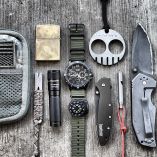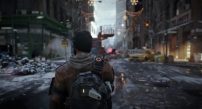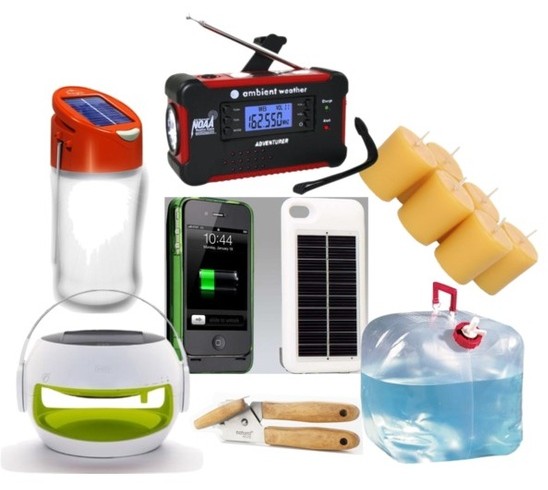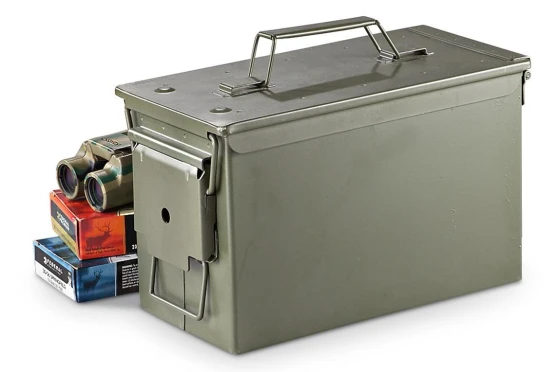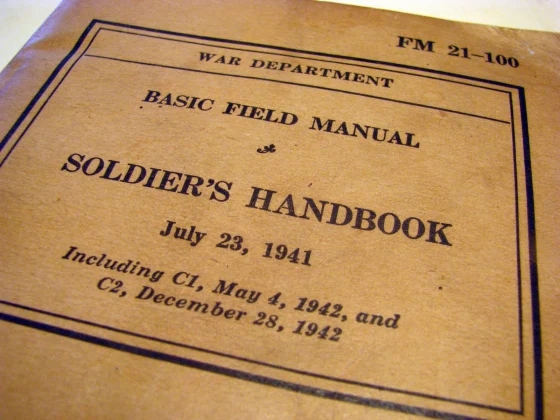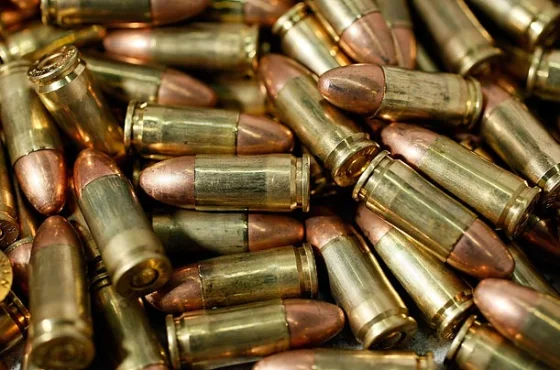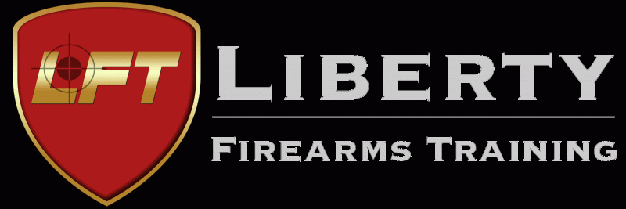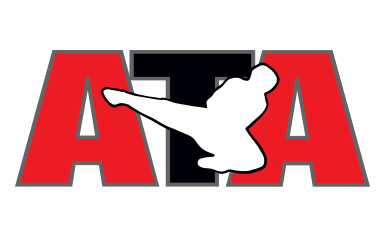A B C D E F G H I J K L M N O P Q R S T U V W X Y Z
A
Action: The group of moving parts that load, fire, and unload the rifle. Loading involves opening the action, placing a cartridge in the chamber, and then closing the action with the cartridge in place. In most rifles, opening and closing the action cocks the firing pin, making the rifle ready to be fired. Some rifles must be cocked separately. Firing takes place when the trigger is pulled to the rear. This action allows the firing pin to strike the cartridge and fir the gun. When the action is opening after firing, the used cartridge is ejected so that a new one can be loaded.
Ammunition: The projectiles with their cases, primers, and propelling charges that are fired from gun; cartridges.
Any Other Weapons (AOWs): This is a broad “catch-all” category used to regulate any number of firearms which the ATF deems deserving of registration and taxation. Examples include, among others: Smooth-bore pistols, Pen guns and Cane guns, Short-barreled firearms with both rifled and smooth bores, etc., Disguised firearms, Firearms that can be fired from within a wallet holster or a briefcase. A short-barreled shotgun which came from the factory with a pistol grip is categorized as an AOW rather than a SBS, because the Gun Control Act describes a shotgun as “…designed or redesigned to be fired from the shoulder…” Handguns with a forward vertical grip. It is therefore illegal to place an after-market fore grip on any pistol without first registering it as an AOW and paying the $200.00 “making tax” imposed by the Act.
back to top
B
Backstop: Anything that will safely stop a bullet and prevent it from hitting anything else after the target is struck.
Barrel: The metal tube through which the projectile passes when the rifle is fired.
Benchrest: A shooting sport in which the competitors seek to place five or ten consecutive shots into the smallest possible group on a paper target at various ranges. All firing is done from an artificially supported shooting position. It is a severe test of the mechanical precision of both the small arm and its ammunition.
Berm: On an outdoor shooting range, a large pile of dirt that functions as a backstop
Bipod: A two legged support for the front end of a rifle to stabilize the gun while shooting.
Blowout kit: First-aid items intended to immediately control serious bleeding or other life-threatening condition in a combat situation. May contain bandages, tourniquets, etc.
Bluing or Blued: The chemical process of artificial oxidation (rusting) applied to gun parts so that the metal attains a dark blue or nearly black appearance.
Bolt: The sliding part in any breech-loader’s action that guides a round into the chamber and rotates to tightly lock and prevent the action from opening upon firing.
Bolt Action: This type action operates on a lift, pull, and push sequence similar to a door bolt. Many people feel that the bolt action is the strongest and most accurate of the action types.
Bolt handle: The lever that the shooter pulls back to open the action on a bolt-action rifle and pushes forward to chamber a round and close the action.
Boo-boo kit: A very simple first-aid kit for very minor wounds (scrapes, cuts, etc). Usually just a tube of Neosporin and a few Band-Aids.
Bore: The hole in the barrel through which the projectile passes. The diameter is measured in fractions of an inch (caliber) or millimeters.
- A smooth-bore firearm is one that does not have rifling on the barrel’s internal surface.
- A big-bore firearm is one that fires a large caliber.
- A small-bore firearm is one that fires a small caliber.
Brass: A slang term for an empty shell casing. Most shell casings are made of the metal alloy known as brass
“break” = Phrase used to separate transmissions or messages to two different recipients. Signals a pause during a long transmission to open the channel for other transmissions, especially for allowing any potential emergency traffic to get through. (mil, p/f)
“break-break” = Signals to all listeners on the frequency that the message to follow is priority. Almost always reserved for emergency traffic. (mil, p/f)
Breath control: Simply means to stop breathing before firing a shot. Breathing causes your body to move. Continuous breathing makes it difficult to maintain a steady sight picture. Before firing the shot, be sure you are comfortable and relaxed. Then exhale and stop breathing. This technique will help you in aiming by reducing the movement of your body and rifle in relation to the target. You should hold your breath no longer than about 8 to 10 seconds while aiming at the target. If you are not able to get your shot off within that time, stop, take a breath or two, and repeat the process.
Breech: That portion of the gun that contains the rear chamber portion of the barrel, action, trigger or firing mechanism, and the magazine. The rearmost end of a barrel, closest to the shooter.
Brick: A box of ammunition roughly equal in size and weight to a brick. Most often used to describe a 500-round container of 22 Long Rifle ammunition.
Bugout bag: It is your sustainment load, or your gear needed to survive for at least 72 hours.
BC: Ballistic coefficient represents the projectile’s ability to overcome the air resistance in flight. The higher the BC, the sleeker or more aerodynamic the bullet. BC determines ability to resist drag, maintain velocity and energy as it flies, and to maintain a flat trajectory. Higher BC = less susceptible to wind deflection and wind degradation or energy loss. BC must be known in order to calculate accurate trajectories.
Bolt-action: A firearm, typically a rifle, that is manually loaded, cocked, and unloaded by pulling a bolt mechanism up and back to eject a spent cartridge and load another. Bolt action firearms are popular for hunting, target shooting, and biathlon events. A bolt action rifle allows the shooter maximum accuracy, but may be too slow or cumbersome for some shooting sports.
Bull Barrel: “Bull barrels” are barrels that are not tapered at all. These very heavy barrels, designed for extreme accuracy, are usually seen on target rifles.
Bullet: The projectile that is shot by the rifle at the target. It is normally made of lead and may also have a jacket of hard metal such as copper. The bullet must match the chamber and bore of the rifle.
Bullet Trap: A type of backstop that catches the fired bullet and prevents it from exiting the area. Bullet traps are most commonly used on indoor ranges.
Bull’s-eye: The central blackened part of a target or the smallest center ring.
Bullpup: A rifle configuration in which the action and magazine are located behind the trigger. This makes the overall length of the firearm shorter than it otherwise would be.
Butt: The base of the grip on a handgun and the rearmost portion of the stock on a long gun that braces against the shoulder.
back to top
C
Caliber: The diameter of the bore of a firearm measured as a fraction of an inch. Although such a measurement may be frequently stated in millimeters. It is correctly expressed as “.40 caliber” (note the decimal point) or as “10 millimeter” (without “caliber” or the leading decimal point). Caliber numbers when used to identify the size of the bullet a gun will file are usually followed by words or letters to create the complete name of the cartridge. These letters often represent a brand name or an abbreviation for the name of the company that first introduced the round
Calling the shot: Predicting where the shot will strike the target based upon the sight picture at the instant of firing.
“Call-sign actual” = Sometimes an individual (generally a superior) may have a person monitor the network for them. Saying “actual” after their call-sign asserts you wish to speak to the specific person the call-sign is attached to. (mil)
Carbine: A rifle with a relatively short barrel. Any rifle or carbine with a barrel less than 16″ long must be registered with the Bureau of Alcohol, Tobacco and Firearms. Shotguns with barrels less than 18″ long fall into the same category. Commonly used today to indicate any rifle of short overall length.
Cartridge: Fully assembled round of ammunition consisting of the case, primer, powder charge, and bullet (projectile).
Case: The container in which the ammunition parts are assemble. For rifles and handguns it is usually of brass or other metal; for shotguns it is usually of paper or plastic with a metal head and is more often called a “shell.”
Cavitation: Shockwave behind bullet. Can be 10 times the diameter of the projectile. Permanent cavitation is the hole left by the bullet. Damage will depend on the elasticity of organ or tissue.
Centerfire: Cartridges having the primer in a pocket at the base of the cartridge case.
Chamber: Located at the breech end of the barrel and is the portion into which one round of ammunition is placed for firing.
“Clear” = I have finished talking to you and will be shutting my radio off. (mil, cb, p/f)
“Click” = Kilometer. (mil)
Click/Clicks: A unit of adjustment for a Telescopic Sights
Clip: A device to hold cartridges for charging the magazine of some rifles.
Cock: The term referring to the action of manually drawing the hammer back against its spring until it becomes latched against the sear, or sometimes the trigger itself, arming the hammer to be released by a subsequent pull of the trigger. Some external hammers, and all internal hammers, may be cocked simply by pulling the trigger.
“Code 2” = Urgent, no light or siren. (p/f)
“Code 3” = Urgent, lights and siren. (p/f)
“Code 4” = No further assistance needed. (p/f)
“Code 6” = Stay out of area. (p/f)
“Code 7” = Meal break. (p/f)
“Code 8” = Restroom break. (p/f)
“Copy” = I heard what you just said. Message received. (mil, cb, p/f)
Cross Hairs: The cross-shaped object seen in the center of a firearm scope. Its more-proper name is reticle.
Crown: The area inside the bore nearest the muzzle. Damage to the crown can severely and adversely affect the firearm’s accuracy.
CQC or CQB: (Close Quarter Combat) or (Close Quarter Battle): A type of fighting in which small units engage the enemy with personal weapons at very short range, potentially to the point of hand-to-hand to combat or fighting with hand weapons such as knives or bayonets.
back to top
D
Destructive Devices (DD): Devices such as Grenades, bombs, explosive Missiles, Poison Gas weapons, and similar items and any non-sporting firearm with a bore over 0.50″, such as a 40mm Grenade Launcher often used in conjunction with rifles. (Many firearms with bores over 0.50″, such as 12-gauge shotguns, are exempted from the law because they have been determined to have a legitimate sporting use.)
Double Feed: A malfunction in which the spent case fails to eject from a semi-automatic firearm and blocks the chamber. As the fresh round is brought forward it cannot enter the chamber. It is cleared by stripping the magazine from the gun, racking the slide several times to eject the spent case, and then reloading
Double Stack Magazine: A type of firearm magazine where the ammunition is stacked in a staggered formation within the magazine. The rounds are funneled into a single file line as they reach the opening of the magazine. This type of magazine is usually wider than a single stack magazine, but can hold more rounds than a single stack magazine of the same length. Examples: Beretta 92, Glock, Sig 226/228/229, AR-15, AK-47.
Down Range: The area of a gun range where firearms are pointed when they are fired. The area of the range forward of the firing line.
Dry firing: Simulating shooting with an unloaded firearm, including cocking it and pulling the trigger. Used to practice gun handling and control. Can damage some firearms. Consult your firearm’s operating manual before dry firing.
Dud: A round of ammunition that does not fire.
back to top
E
Ejector: A spring-activated mechanism for the ejection of ammunition or and empty shell casing. On doubles, each barrel has a separate ejector.
Elevation: Vertical adjustment of a firearm sight to change where the bullet hits the target.
EDC: Every Day Carry (or First Line Gear) refers to the items that you carry on you all of the time.
EOTWAWKI: End Of The World As We Know It.
“ETA” = Estimated time of arrival (mil, cb, p/f)
Extractor: A device that withdraws or elevates a fired shell casing from the chamber as the breech mechanism (slide) is opened.
Energy: Energy or remaining energy for terminal effect measured in foot pounds of energy (FP/E).
back to top
F
Failure to eject spent case: Firearm malfunction caused by a broken or weak extractor or ejector, bad ammo, dirty chamber.
Failure to fire: Firearm malfuntion caused by a bad primer, light firing-pin strike, bolt not fully in battery, improper seated magazine.
Failure to properly feed a round into chamber: Firearm malfunction caused by poorly seated or broken magazine.
Firing line: At a target range, the line along which shooters are positioned for firing at their targets.
Firing pin: The device that strikes the primer in the cartridge, igniting the primer by causing an indentation that crushes the priming compound.
First line gear: (or Everyday Carry) Refers to the items that you carry on you all of the time.
Flash Suppressor: A muzzle attachment intended to reduce visible muzzle flash caused by the burning propellant. Flash reducers lessen glare as seen by the shooter, but do not hide the flash from other observers to the front or side of the firearm.
Follow-through: It is maintaining position, aim, breath control, hold control, and trigger control before and immediately after firing the shot. Follow-through allows the rifle to recoil and return to its natural point of aim after the shot is fired. This will minimize the possibility of any sudden movement (just before the shot is fired) that will disturb the sight picture and radically change the bullet’s path. If you remember where the bull’s-eye was located in, or on, the front sight when the shot was fired and can tell your instructor where it was, then you have followed through. This is the process that shooters refer to as “calling the shot.”
Fore-end: The part of gun’s stock forward of the action, extending under the barrel and providing a grip for one hand below the barrel.
Fouling: The residue from burning powder left in the barrel after a shot is fired.
Fragmentation: Projectile fragments or secondary fragments such as bone create their own paths through flesh. This is a cause of tissue disruption with high velocity bullets.
“Freak” = Radio frequency. (mil)
“friendly” = An ally or buddy (non enemy). (mil)
Frog = Adapter for connecting a bayonet scabbard to a belt. Used on many older bayonet designs.
back to top
G
Grain: A unit of weight measurement used for bullets and gunpowder. The more grains, the heavier the bullet. Powder is also measured by grains, but this is generally of interest only to re-loaders.
- 437.5 grains = 1 ounce.
- 7000 grains = 1 pound.
“Go ahead” = Send your transmission. (mil, cb, p/f)
Grip: The part of the stock gripped by the firing-hand.
Grooves: Spiral cuts into the bore of a barrel that give the bullet its spin or rotation as it moves down the barrel. Technically is is the portion of the bore in a rifled barrel that has been machined away.
Group: The pattern of shot-holes on a vertical target. The group size is measured by finding the bullet holes that are the furthest apart from each other and measuring from the center of one hole to the center of the other hole.The closer the holes, the better. Obviously the number of shots fired affect the group size. Typical numbers are three, five and ten. From a statistics viewpoint a three shot group is virtually meaningless as a measurement of firearm accuracy. Five shot groups are acceptable. Some advocate a seven shot group as a good trade-off between economy and statistical relevance.
back to top
H
Hammer: The part the firearm that strikes the primer. In some firearm designs the hammer directly strike the primer, while other strike a separate firing pin.
Hang-fire: The rare case of the priming compound not igniting immediately. It may ignite after a delay. Keep the firearm pointed in a safe direction for at least 30 seconds before unloading the firearm.
Happy Meal: MRE
Hold control: Means keeping the aligned sights or scope reticle aimed as closely as possible on the center of the target. It is the most important period in firing a shot. Even though you assume a proper and relaxed position and stop breathing, you will still notice movement in the sight picture. This movement is natural. From a support such as a bench-rest or bipod a shooter can come close to eliminating movement. You must learn to concentrate totally and consistently on sight picture control when firing. This is not something that can be learned in one or two shooting sessions. All the other fundamentals of shooting can be learned in a fairly short period of time, but hold-control is practiced by champion shooters for years.
back to top
I
“interrogative” = Confusion regarding the last transmission or about the current situation. (mil)
back to top
K
Kydex: A thermoplastic that is frequently used as an alternative to leather in the production of firearm holsters and sheaths for knives.
back to top
L
Lands: The flat, raised ridges of metal standing between the rifled grooves inside the barrel.
Length of pull: The distance from the trigger to the rear of the butt.
Lever action: The action is opened by pulling the cocking lever downward and forward away from the stock. It is closed by simply returning the lever to its original position.
Line gear: Refers to the various layers of gear that you might need to survive and flourish during an emergency.
Live firing: Shooting with a loaded firearm, using live ammunition.
Load-out: A general term denoting the tactical gear and equipment attached to or carried in chest rigs and the load bearing systems. (e.g. magazines, radios, knives, first aid kits etc)
“Loud and clear” = I understand what you say. (mil, cb, p/f)
back to top
M
Machine Gun: This includes any firearm which can fire more than 1 cartridge per trigger pull. Both continuous fully-automatic fire and “burst fire” (i.e., firearms with a 3-round burst feature) are considered machine gun features.
Magazine: A container with a spring into which several cartridges can be placed. The two most common types are non-detachable box types located inside the bottom portion of the action, a tube type located under the barrel or in the stock, or detachable types that can be loaded and then slipped into place into the gun. The magazine uses a spring to push the unfired cartridges into the path of the bolt for loading.
Malice Clips: Injection molded, heavy duty, reusable connecting clips that are designed to attach modular pouches to MOLLE/PALS style equipment.
“Mayday” = Maritime/aviation distress call. Repeated three times and at beginning of every following transmission relating to the current distress situation. Has priority over urgency and safety calls.
“mike(s)” = Minute(s). (mil)
MRE: Military acronynm for Meals Ready to Eat. High calory meals packed for long-term storage. Sometimes referred by military personnel as a “Happy Meal”, as in from McDonald’s.
Mil-Spec: (Military Specification) The quality standard manufacturers must adhere to when supplying items to the military.
Misfire: Happens when a cartridge does not fire when the firing pin hits the primer. When this happens, the shooter must keep the gun pointed in a safe direction and wait for at least 30 seconds before opening the bot. The misfire normally happens because the strike by the firing pin was too weak to fire the priming compound or because there was no priming compound where the fining pin hit the cartridge’s primer.
MOLLE: MOdular Lightweight Load-carrying Equipment (pronounced MOLLY). See Pals Webbing.
Muzzle: The forward end (mouth) of the barrel, through which the projectile exits.
back to top
O
“out” = I have finished talking to you and do not expect a reply. (mil, cb, p/f)
“over” = I have finished talking and I am listening for your reply. Short for “Over to you.” (mil, cb, p/f)
back to top
P
PALS webbing: Pouch Attachment Ladder System, is a grid of 1″ nylon webbing strips used to attach smaller pouches and equipment onto load-bearing platforms such as backpacks and plate carriers. Uses Malice Clips, Blackhawk Speed Clips or Grimloc D-rings to attach the equipment. The term “Pals Webbing” is used interchangeably with “MOLLE”.
“pan-pan” = Maritime/aviation urgency call. Repeated three times. Has priority over safety calls.
Path: Distance above or below the bore axis (line of sight) in inches.
Penetration: Flesh is destroyed or disrupted by the passing projectile.
Pistol: A term for a hand-held firearm with a single chamber. (A revolver has at least five chambers.)
Primer: Impact-sensitive chemical mixture that ignites when hit by the firing pin.
Powder: A chemical compound that when ignited serves as the propellant. When ignited by the primer, the power’s gases expand rapidly and produce a high pressure, providing the force needed to propelthebullet through the barrel and to the target.
Pump action (also called Slide Action): The fore-end of the stock is pumped back and forth to open and close the action.
back to top
R
“radio check” = How does my radio sound? (mil, cb, p/f)
Receiver: The basic unit of a firearm which houses the firing mechanism and to which the barrel and stock are assembled. In revolvers, pistols and break-open firearms, it is called the frame.
“repeat” = Say last transmission again.(Repeat is not used in US military radio terminology; it is used exclusively to request additional artillery fire). (mil, cb, p/f)
Revolver: A firearm with a cylinder having several chambers so arranged as to rotate around an axis and be discharged successively by the same firing mechanism. A semi-automatic pistol is not a revolver because it does not have a revolving cylinder.
Rifle: A firearm having spiral grooves in the bore and designed to be fired from the shoulder. By law, rifle barrels must be at least 16″ long. Handguns usually have rifled barrels as well.
Rifling: The grooves and lands inside the barrel. When a projectile passes through the barrel, the lands cut into the bullet to make it spin. This spinning action makes the projectile more stable and accurate in flight toward the target, similar to a well-thrown football.
Rimfire: Cartridges with the primer contained in a fold (rim) at the base of the case, which when struck by the hammer ignites the powder charge.
“roger” = I understand what you just said. (mil)
“roll call” = Each person or element check in to show that they are on frequency and receiving radio traffic. (mil)
Round: Another name for a cartridge.
back to top
S
Safety: Mechanical device designed to prevent a gun from being fired accidentally. When the safety is “on” it should block the operation of the trigger, thus preventing the firearm from firing. Always remember that the safety is only a mechanical device. Never depend on it as a substitute for following the safety rules. You are the ultimate safety.
“say again” = Repeat your last transmission. (mil, cb, p/f)
Scabbard: Sheath for sword, knife, dagger or bayonet.
Selective-Fire: A firearm’s ability to select between different firing modes (fully automatically, semi-automatically or, in some cases, in burst-fire mode).
Semi-automatic action: Each time the fired, burning powder in the cartridge produces gas that provides gas that provides the energy to open the action and eject the cartridge case. A spring then closes the action, reloading a new cartridge at the same time. This happens once each time the trigger is pulled.
“send traffic” = You are clear to send your transmission. (mil, p/f)
“sierra hotel” = Shit hot (from really good). (mil)
Sight alignment: The alignment of the eye, rear sight, and front sight. Consistent and proper sight alignment is necessary for accurate aiming. When using open sights with a post or bead front sight, sight alignment is correct when the front sight is centered in the rear sight notch and the top edge of the front sight is even with the top of the rear sight. With aperture or peep sights, sight alignment is correct when the front sight ring or top edge of the front sight post is centered in the rear sight aperture. When using a telescopic sight, proper sight alignment is achieved by positioning the eye to clearly see the entire field of view when looking through the scope.
Sight height: Line of sight through mounted optics measured in inches above the bore line or barrel axis.
Sight picture: The relationship between the eye, the aligned sights or scope, and the target. Sight picture will vary according to the type of sights and kind of target being used. A bead front sight should be aimed at the center of the target. The top edge of a post front sight is centered on the bull’s-eye or at the bottom of the bull’s-eye (called a “6 o’clock hold”). When you have obtained the correct sight picture, the front sight should be clearly defined while the target and rear sight remain slightly out of focus. A scope reticle (usually crosshairs) is simply centered on the target and everything is brought into clear focus.
Sights: The metallic or optical devices attached to rifles that enable them to be aimed.
Single Stack Magazine: A type of firearm magazine where the ammunition is stacked in a single file formation within the magazine. These type of magazine is usually slimmer than a double stack magazine, but holds fewer rounds than a double stack magazine of the same length. Examples: 1911 pistols, most compact size semi-automatic pistols.
“sit-rep” = Situation report (report on what is going on). (mil, p/f)
Short Barreled Rifle (SBR): This category includes any firearm with a buttstock and either a rifled barrel under 16″ long or an overall length under 26″. The overall length is measured with any folding or collapsing stocks in the extended position. The category also includes firearms which came from the factory with a buttstock that was later removed by a third party.
Short Barreled Shotgun (SBS): This category is defined similarly to SBRs, but the length limit for the barrel is 18″ instead of 16″, and the barrel must be a Smooth bore. The minimum overall length limit remains 26″.
Squib: The rare case where the primer ignites, but there are not enough gasses to force the bullet out of the barrel. If the round fired did not sound right, nor did it hit the target, stop and do not fire another round. A bullet may be lodged in the barrel and the firearm may burst if another round is fired. If possible, remove the bolt or open the action and inspect the barrel from the breech. If a bullet is in the breech, use a rod and push it out from the breech. Never push it back in from the muzzle. Clean the barrel before shooting again.
“standby or wait one” = Pause for the next transmission. This usually entails staying off the air until the operator returns after a short wait. (mil, p/f)
Stock: The wood, fiberglass, wood laminate or plastic component to which the barrel and receiver are attached.
Super pails: Five Gallon Food Caches are intended as resupply caches. They are simply five gallon plastic buckets that are filled with food and survival items.
Suppressor (aka Silencer): This includes any portable device designed to muffle or disguise the report of a firearm.
back to top
T
“tango” = Bad guy (from terrorist). (mil)
“tango uniform” = Broken (from tits up). (mil)
Third line gear: May be refered to as a 72 Hour Bag or Bugout Bag . It is your sustainment load, or your gear needed to survive for at least 72 hours.
TOF: Time of flight from ignition to impact.
Trigger: The lever that activates a firearm when moved, usually pulled by one finger.
Trigger control: To fire a good shot, pull the trigger straight to the rear when your hold is best. Slowly squeezing the trigger while maintaining a good sight picture works much better than trying to quickly jerk the trigger to catch that instant when the sight picture looks just right. There are two rules for good trigger control: 1. Pull the trigger while holding steady. 2. Pull the trigger straight to the rear smoothly and slowly, without disturbing your hold. Remember to concentrate on hold control with your focus on the front sight.
Trigger guard: Protective shield around the trigger that keeps the trigger from being pulled accidentally.
back to top
V
Velocity: Bullet speed in feet per second.
back to top
W
“wait one or standby” = Wait a moment to talk or to receive a reply. Pause for the next transmission. This usually entails staying off the air until the operator returns after a short wait. (mil, p/f)
“wilco” = I will comply (after receiving new directions). (mil)
Windage: Horizontal adjustment of the sights on a firearm to send the projectile to the right or left on the target.
back to top
Z
Zero: The point at which a rifle’s sights are adjusted to the proper point of impact.
Zeroing: The mechanical movement of the sights to center the shot group in the center of the target.
back to top
Numbers
“10-1” = Unable to copy, change location. (cb, p/f)
“10-2” = Signal good. (cb, p/f)
“10-3” = Stop transmitting. (p/f)
“10-4” = Acknowledgement, ok. (cb, p/f)
“10-6” = Change channel. (p/f)
“10-20” = Location. (cb, p/f)
“417” = Person with a gun. (p/f)
“5150” = Mental case. (p/f)













